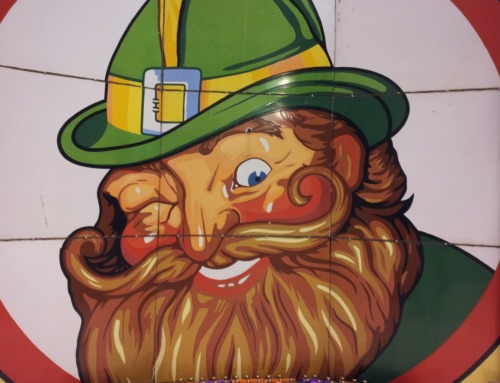All lives are molded, more or less, by our first teachings. True courtesy, sympathy, and sincerity are the most powerful factors for good in either home or public life.~Harriet Quimby
March is Women’s History Month, so while researching a topic for this month, I began looking at notable women from the Mitten State. There are many illustrious women that I could have chosen, from Diana Ross to Betty Ford. However, one of the lesser-known women I learned about truly fascinated me, and I wanted to focus my article on her so that more Michiganders can learn about this amazing person.
Harriet Quimby was born on May 11, 1875 to William and Ursula Quimby in Arcadia Township of Manistee County. She spent most of her formative years in Michigan on a farm, first in the Coldwater area, then later in Manistee. She was known as a tomboy, full of moxie and ready to try anything. During the Panic of 1893, a serious economic depression in the United States, the family moved to San Francisco in search of a better living.
Once in California, 18-year-old Harriet briefly considered an acting career and worked at the Clay Clement Company’s Columbia Theater. Here, she became friends with D.W Griffith and his future wife, Linda Arvidson. This friendship would be important for her future. She quickly learned her talents lay in writing and made a name for herself as one of California’s leading newspaper writers, contributing to the San Francisco Dramatic Review, the San Francisco Chronicle and San Francisco Call.
In 1903, Harriet moved to Manhattan, New York in search of more travel, adventure, and challenge. She was a regular contributor to Leslie’s Illustrated Weekly and many other New York publications. She often wrote of her travels and became a talented photographer as well. In 1905, she was hired full-time by the publication as a drama critic. This job gave her the freedom and money to travel and have even more adventures.
In 1906, Harriet took a ride in a race car and wrote an article about the experience. The article revealed her love for the speed and freedom that was given by the automobile. She was one of the first women in America to earn her driver’s license and own an automobile. However, it wasn’t long before her fascination with the automobile was taken over by a new passion for aviation.
Harriet’s love of flight was born from researching an article she wrote on a Japanese aeronaut. From that time on, she spent much time in the New York airfields. She traveled to Los Angeles to cover the first air meet in the United States. In October of 1910, she covered New York’s Belmont Air Meet and met a man who would forever change her life.
At the New York meet, American pilot John Moisant narrowly defeated France’s Count de Lasseps. This meet drew Harriet to aviation like nothing had drawn her before. She reported that flight appeared so easy that she believed she could do it herself. She was determined to do so. Already friends with Moisant’s sister, Matilde, she quickly became friends with John himself, who was not only a pilot, but also owned a flying school in Long Island. Harriet convinced John to teach her how to fly. He did so until tragedy struck in December of 1910. John was practicing in his effort to win a prize for the longest sustained flight of that year. While attempting to land at an airfield in Harahan, Louisiana, he was caught in a gust of wind and thrown from his Blériot XI monoplane. He fell about 25 feet to the ground and landed on his head, breaking his neck and killing him. In spite of this accident, Harriet continued learning.
As evidenced by John Moisant’s death, aviation was a dangerous and expensive sport, and many believed that it was best practiced by young men, not genteel society ladies. Harriet paid no mind to these opinions and continued on in her pursuit to obtain a pilot’s license at Moisant’s School of Aviation. She was a quick learner and studied many other pilots to become even better. She wore trousers tucked into high lace boots, a plum-colored satin blouse, and usually a necklace and bracelet. Many of her readers enjoyed articles about her activities and she quickly became America’s sweetheart.
Though she was learning to fly and much of her focus was on earning her pilot’s license, Harriet continued to write. In 1911, she wrote seven screenplays that would be made into short films by Biograph Studios, a company based in Bronx, New York City. All of these films were directed by the renowned D.W. Griffith, her old friend from San Francisco. Harriet herself had a small role in one of them, Lines of White on a Sullen Sea. She was now becoming well-known in many different areas.
On August 1, 1911, Harriet became the first American woman to earn a pilot’s license. It was sanctioned by the Federal Aeronautique Internationale and given by the Aero Club of America. Her charm, good looks and the public’s growing interest in aviation allowed her to become a cover girl for the sport. She joined an exhibition group, where she competed in meets and became good friends with many of the pilots. Less than a month after earning her license, Harriet won her first cross-country race, which came with a $600 prize.
Harriet continued to set records and break barriers. On September 4, 1911, she became the first American pilot to fly at night. During the Richmond County Fair, in front of 15,000 people, she flew over Staten Island in 7 minutes. She won $1500 for this feat. In late 1911, she even traveled to Mexico City to fly in a celebration to honor the inauguration of President Francisco Madero. Once again, Harriet showed her ability to fly, as well as her popularity with not only Americans, but also people around the world.
Harriet was known as a safe pilot, possibly due to losing her close friend and mentor to a plane accident. She was very dedicated to pre-flight checks and always used seat belts. She was influential in this aspect to many other pilots, both men and women.
On April 16, 1912, Harriet Quimby’s fame reached its peak. She flew from Dover, England, over the cliffs of Dover to a beach in Calais, France, becoming the first woman to fly over the English Channel. It was a rousing success, but this feat was overshadowed by the sinking of the Titanic the day before. That same month, Harriet became the spokesperson for the Vin Fiz Company’s new grape soda. Her distinctive purple aviator uniform was ideal for this, and she graced many of their advertisements. She continued writing, traveling and flying, earning a comfortable living from winning contests, writing and her numerous public appearances.
On July 1, 1912, Harriet arrived in Squantum, Massachusetts for the Harvard-Boston Aviation Meet. She was to be one of the headlining attractions. The day began with interviews, photographs, demonstration flights and much fanfare. Harriet decided to show off her new Bleriot plane and fly a course in preparation for the next day. She invited William Willard, the organizer of the meet, to ride with her. William flipped a coin with his son, aviator Charles, to see who would get that honor. William won and climbed into the two-seat plane.
Harriet and William flew out to the Boston light in Boston Harbor, then returned and circled the airfield. They headed out over the water again, and that was when the unthinkable happened. The plane plunged toward the water at an alarming rate of speed and both Harriet and William were thrown from it. They hit the water 300 feet from shore, dying on impact. The plane glided down and became lodged in the mud on the shore.
There are many arguments as to why the plane crashed. Some speculate that Harriet had been overcome by a rush of wind and had fainted. Others argued that Harriet and William hadn’t been properly strapped in. Many others debated against these arguments, as Harriet was not the kind of woman to swoon and would never have ignored basic safety precautions. It is possible that sabotage was the cause, though there was no proof of it. Whatever the reason, Harriet Quimby, aviation pioneer and fan favorite was dead at the of age 37. Her achievements would live on in the female aviators who came after her, including Amelia Earhart, Jackie Cochran and Anne Morrow Lindbergh.
In September of 1912, Good Housekeeping published an article by Harriet that had been written before she died. This article promoted the value of aviation being an ideal sport for women. She said: “There is no sport that affords the same amount of excitement and enjoyment, and exacts in return so little muscular strength. It is easier than walking, driving or automobiling; easier than golf or tennis … Flying is a fine, dignified sport for women…and there is no reason to be afraid so long as one is careful.”
Harriet Quimby has been honored as an inductee to the National Aviation Hall of Fame and the Michigan Women’s Hall of Fame, and is also recognized in the Long Island Air and Space Museum. She is an inspiration to men and women alike not just for her aviation accomplishments but for all of her achievements in life. I for one admire her and the example she has set for all and to think she was born a Michigander.







Leave A Comment
You must be logged in to post a comment.